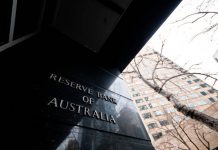Markets
Yesterday, last week’s repositioning on US and European interest rate markets simply continued with European markets again underperforming. Chair Powell on Friday was very clear that the Fed will do ‘whatever it takes’ to bring inflation back to the 2.0% target, even as that may cause pain in terms of lower growth and higher unemployment. US yields rose further between 2.7 bps (2-y) and 6.2 bps (10-y). Interestingly, the move this time wasn’t the usual bear flattening that often dominated recent repositioning. Is the faster pace of QT in September weighing on bonds with longer maturities? Technical considerations might also be in play as the US 2-y yield is retesting the cycle top near 3.42%. Anyway the rise in US yields was fully driven by higher real yields. EMU swap yields jumped between 15.3 bps (2-y), 11.9 bps for the 10-y yield and 4.9 bps for the 30-y. The 2-y swap jumped above the 2.0% June top to close at a new cycle peak of 2.08% after hawkish ECB members on Friday and over the weekend started the debate on a 75 bps rate hike at next week’s meeting. ECB’s Lane isn’t in the camp of this kind aggressive frontloading yet and prefers a gradual/protracted approach to minimize negative consequences. Still current market pricing sees a chance of 75% of a 75 bps hike rather than a 50 bps step. The (broad) tightening of monetary conditions that the Fed is aiming for also continued via equity markets. US indices again lost up to 1.0% (Nasdaq). The EuroStoxx50 declined 0.92%, but a correction in European gas prices helped equities to close off the intraday lows. The dollar is holding strong, but a clean break higher didn’t occur (yet?). DXY touched a minor cycle top at 109.47, but gains couldn’t be sustained (close 108.83) despite the rise in US real yields. USD/JPY (close 138.72) also just missed the July top. The euro gains some reprieve from the catching up move in European yields (EUR/USD close 0.9997).
Asian equities this morning mostly trade in positive territory with China underperforming (-0.75/-1.0%). The PBOC with a stronger than expected fixing is again leaning against recent yuan depreciation. Still the onshore yuan weakens slightly further to USD/CNY 6.9165. Later today, the calendar is well filled with the preliminary German (and Spanish) August inflation, the EC confidence indicators, US house prices and consumer confidence (Conference Board). The Bund future gains some ground on a (mildly) softer than expected North Rhine Westphalia CPI. However, there is still a decent chance for the Y/Y figure to return to (or above) the 8.7% May top (HICP) . In a data-dependent approach, this leaves a solid case for bold frontloading ECB action. For now, we don’t anticipate a sustained correction to the established trend of higher US and European yields. On FX markets, the dollar apparently needs a clear sign to break beyond recent cycle peak levels. Maybe some consolidation might be on the cards with Friday’s payrolls a potential trigger to decide on the next directional move. The euro probably isn’t out of the woods yet, but a further correction in the gas price might help to keep the EUR/USD pair away from the 0.99 short-term.
News Headlines
European Commission President von der Leyen said that the EU was working on emergency intervention measures as well as structural reforms to the power market. She pointed to decoupling electricity prices from the gas price with the exorbitant surge of the latter influencing the former. The EU also wants to ensure that renewable energies are generated at lower costs, that those costs are transferred to consumers and that windfall profits are used to help vulnerable households. Von der Leyen wants those emergency instruments to be triggered very quickly, perhaps in weeks. The announcement helps explain yesterday’s setback in gas prices with the reference Dutch TTF future dropping 15% after last week’s test of the YTD high set in the wake of the start of the Russian invasion.
The Fed’s balance-sheet roll-off (Quantitative Tightening) is set to hit max speed. From Thursday, monthly caps for maturing assets will be raised to $60bn for Treasuries and $35bn for mortgage-backed securities. If the Fed’s portfolio doesn’t allow for such amounts, it will use its $326bn T-bill portfolio to make up for what’s left. More specifically, we’re already looking at $16.4bn of Bills in September and $13.6bn in October.













